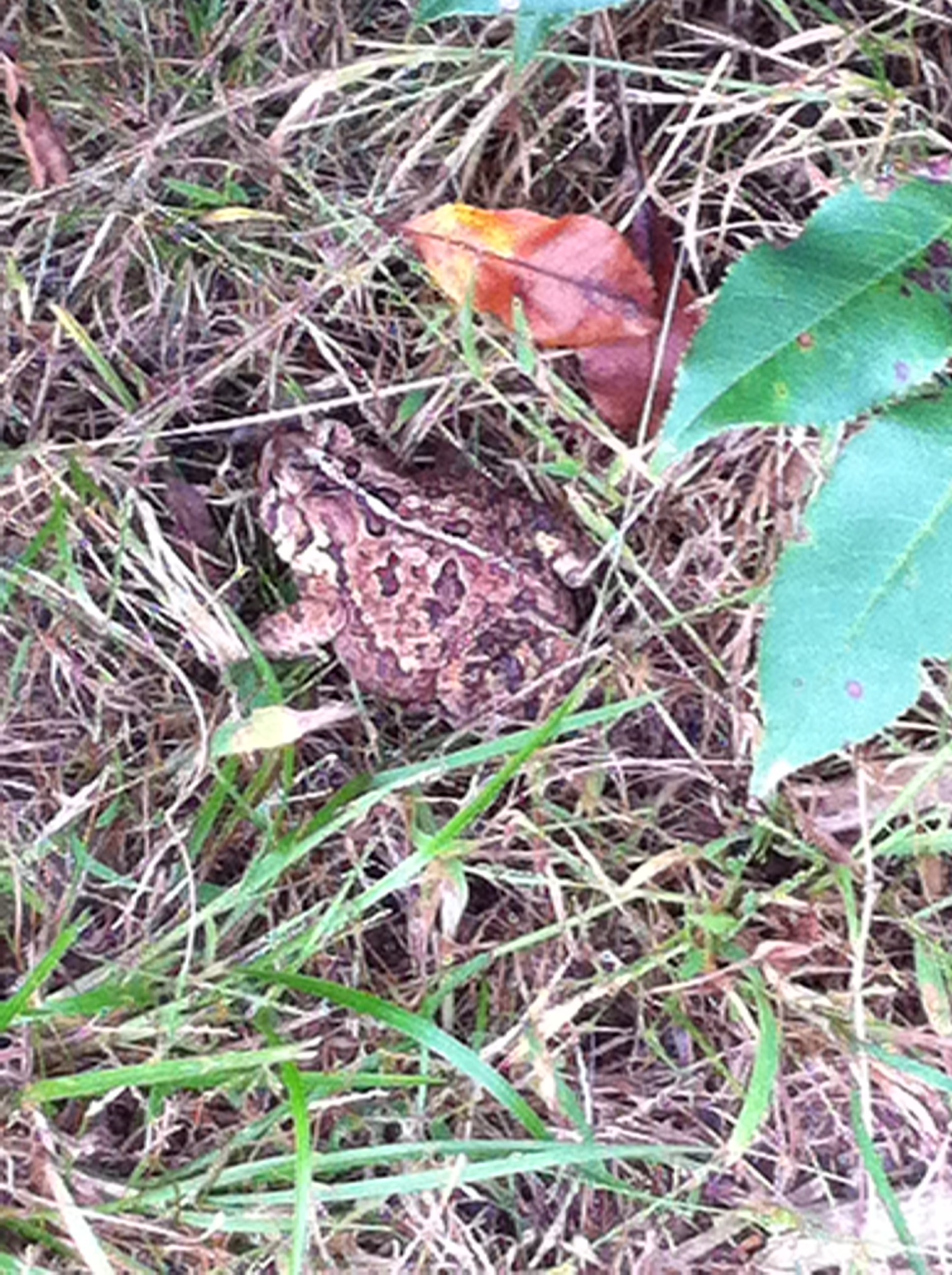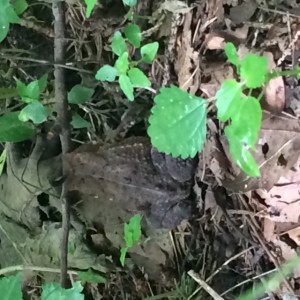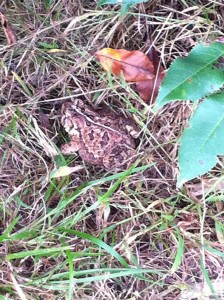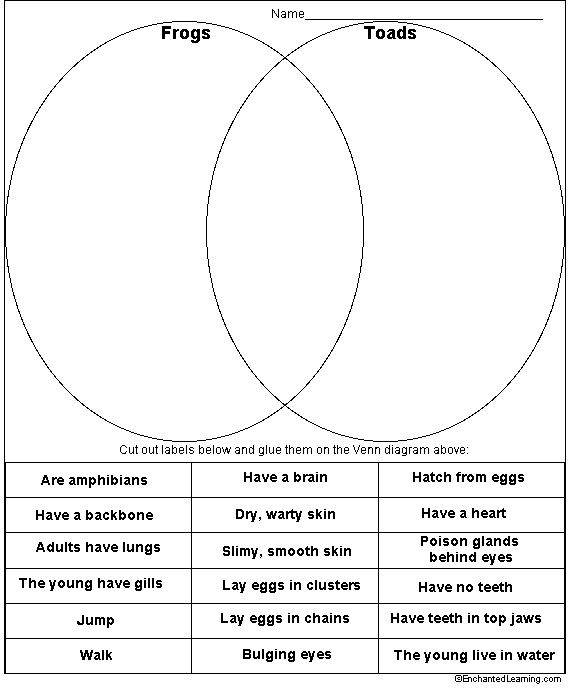Fun and Easy Science of Frogs and Toads for Kids
Can you spot the toad? Ok, it wasn’t that hard. This toad hopped across my path the other day at the off-leash dog park. It was the largest toad I’ve seen around here, almost the size of my fist. I happened to have my iPhone with me so I took a picture very quietly. Luckily, my dog didn’t spot it. I thought the toad has pretty good camouflage! What do you think? Can your child spot it?
Then I started thinking of frogs versus toads…and found this from Enchanted Learning.
Frogs and toads are amphibians, animals who begin their lives in the water (breathing with gills) and then, during maturity, live on land (breathing with lungs). The word amphibian means “double life.” Frogs and toads are found all around the world, on all continents except Antarctica.
Anatomy:
Frogs and toads belong to the order Anura (meaning “without a tail”, since most have no tail in their adult form). They also have a very short backbone.
| True Frogs (Family Ranidae) | True Toads (Family Bufonidae) | |
|---|---|---|
| Skin | Moist and smooth | Bumpy and dry |
| Teeth | Teeth in upper jaw | No teeth |
| Eyes | Eyes bulge out from the body | Eyes do not bulge out from the body; a poison gland is located behind each eye. |
| Hind Legs | Long, powerful jumping legs; most frogs have webbed hind feet. | Shorter legs (for walking) |
| Eggs | Eggs laid in clusters | Eggs laid in long chains (but a few toads give birth to live young) |
Diet:
Frogs and toads eat insects, spiders, small fish, worms and other tiny animals. They catch them with their long, sticky tongue.
Life Cycle:
Like all amphibians, frogs spend their lives near water because they must return to the water to lay their eggs. Frogs and toads begin their lives as tiny eggs laid in clusters on or very near the water. The eggs hatch into tadpoles that swim in fresh water and breathe with gills. As a tadpole grows, it develops legs and loses its tail. When this process is complete, the froglet breathes with lungs and lives on land.
Beginnings:
The first true frogs evolved during the early Jurassic period, about 200 million years ago (during the time of the dinosaurs).
Classification of Frogs and Toads:
Kingdom Animalia (animals)
Phylum Chordata (animals with a notochord)
Class Amphibia (amphibians)
Order Anura (frogs and toads)
Family Many families, including Family Bufonidae (toads), Family Centrolenidae, Family Dendrobatidae (poison dart frogs), Family Discoglossidae, Family Hylidae (tree frogs, etc.), Family Hyperolidae, Family Leptodactylidae, Family Microhylidae, Family Myobatrachidae, Family Pelobatidae, Family Pipidae, Family Pseudidae, Family Ranidae (true frogs), Family Rhacophoridae, Family Rhinophrynidae.
They provided a fun worksheet using Venn diagrams! (Do you like that? Math AND science?!)
There is also a really great iPad iPhone science app called Virtual Frog Dissection. It’s better on iPad though.
Finally, some books! I have been enjoying these with my first grader so maybe they are a tad easy for those who can do the Venn diagram exercise, but there is a zen-ish quality to Frog and Toad that transcends all ages. And my big kids sometimes like an excuse to read picture books.
Origami: Fold a Jumping Frog in 13 Easy Steps
To examine any of the items listed, please click on image of item. As an Amazon Associate, I earn from qualifying purchases.
Follow PragmaticMom’s board Science Fun on Pinterest.
BEST #OWNVOICES CHILDREN’S BOOKS: My Favorite Diversity Books for Kids Ages 1-12 is a book that I created to highlight books written by authors who share the same marginalized identity as the characters in their books.

















